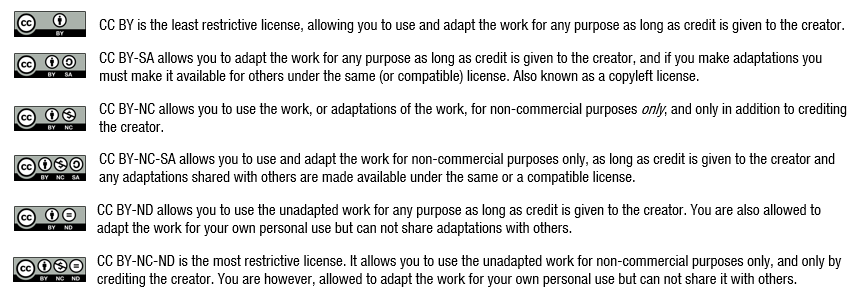Creative Commons
Creative Commons is a machine-readable licensing tool that allowes the creator of an original work to define copyright for their work (image, film, text) while clarifying how others can reuse it. Other users can, for example, copy, remix or distribute works shared with a CC license. The licenses are based on copyright law, but through the use of different license combinations, there can be exceptions from copyright, making reuse more flexible.

Licensing elements
Creative Commons licenses are based on four elements:
|
|
Attribution (BY) |
|
|
Non Commercial (NC) |
|
|
Share Alike (SA) |
|
|
No Derivatives (ND) |
A creator of an original work can define the copyright of their work through combining these elements, creating six different licenses. The most permissive license is attribution using CC license BY.
How to combine the elements and create licenses
This image below show how you can combine the four elements and choose one of six licenses for your work. At the bottom of the page is link to a license chooser, created by Creative Commons.

How do I write the license?
The licenses are written as follows: letter combination CC first, followed by a blank space and the abbreviations of the licenses separated by a hyphen. For example: CC BY-NC 4.0, Attribution-NonCommercial. The number combination, in this case 4.0, is a reference to the license version.
Apart from the six licenses, there is also a CC0 license for creators who want to allow others to use their work without any restrictions, and a Public Domain mark, where copyright does not apply. It could be that the copyright has expired or that copyright was never applicable to begin with.
More information about the licenses from Creative Commons International.
Choose the right CC license for your work with the help of the Creative Commons license chooser.





